- Clearing and Cleaning the Strawberry Beds
- Pruning and Removing Dead Leaves
- 1. Tools needed:
- 2. Identify dead or diseased leaves:
- 3. Remove dead leaves:
- 4. Prune overcrowded plants:
- 5. Cut back healthy leaves:
- 6. Clean up debris:
- Fertilizing and Mulching the Plants
- Fertilizing
- Mulching
- Benefits of Fertilizing and Mulching
- Protecting the Plants from Cold Weather
- 1. Mulch the plants
- 2. Cover the plants
- 3. Remove dead leaves and debris
- 4. Water the plants sparingly
- 5. Protect the crowns
- 6. Monitor for pests and diseases
- Watering and Irrigating the Strawberries
- 1. Watering frequency
- 2. Watering method
- 3. Watering schedule
- 4. Soil moisture monitoring
- 5. Mulching
- 6. Rainwater harvesting
- Controlling Pests and Diseases
- 1. Regularly Inspect Your Plants
- 2. Remove Infected Leaves and Fruits
- 3. Implement Natural Pest Control Methods
- 4. Practice Proper Watering Techniques
- 5. Apply Organic Pest and Disease Control Measures
- 6. Crop Rotation and Soil Management
- Transplanting or Replanting the Strawberries
- Organizing and Planning for the New Strawberry Season
- 1. Assess your current strawberry plants
- 2. Clean and prepare your strawberry beds
- 3. Plan your crop rotation
- 4. Purchase new strawberry plants or propagate your own
- 5. Prepare your planting area
- 6. Consider implementing a protective mulch
- Question-answer:
- When is the best time to prepare strawberries for the new season?
- What are some essential tasks for preparing strawberries for the new season?
- Why is it important to remove summer mulch before preparing strawberries for the new season?
- How should I trim dead leaves and runners when preparing strawberries for the new season?
- What should I do to protect my strawberries during winter when preparing them for the new season?
- Video: Preparing Strawberry Plants For Next Years Crop
Autumn is the perfect time to start preparing your strawberry plants for the upcoming growing season. Properly caring for your strawberries during this season will ensure a healthy and productive crop next year. There are several essential tasks that should be performed to ensure the best results, from pruning and cleaning to fertilizing and protecting your plants from harsh weather conditions.
1. Prune and Clean: Start by pruning back any dead or damaged leaves and removing runners that have taken root. This will help keep your plants tidy and reduce the risk of disease and pests. Be sure to clean up any fallen leaves or debris around the plants to prevent the spread of pathogens.
2. Fertilize: Strawberries have high nutrient requirements, so it’s important to provide them with a good source of fertilizer. Use a balanced formula, such as a 10-10-10 or 14-14-14, and apply it according to the package instructions. This will help replenish the soil and provide the necessary nutrients for healthy growth.
3. Mulch: Mulching is essential for protecting your strawberry plants from freezing temperatures and frost during the winter months. Apply a layer of straw or leaves around the plants, making sure to cover the crowns, but leave the tops of the plants exposed. This will help insulate the soil and protect the roots from extreme cold.
4. Water: While strawberry plants require less water during the dormant period, they still need some moisture to survive. Keep an eye on the weather and water your plants when the soil feels dry. Avoid overwatering, as this can lead to rot and other diseases.
5. Disease Prevention: Autumn is a good time to take preventative measures against common strawberry diseases, such as gray mold and root rot. Apply a fungicide to protect against fungal infections and keep an eye out for any signs of disease or pest infestations.
6. Winter Protection: Finally, provide winter protection for your strawberry plants by using row covers or cold frames. These can help protect the plants from freezing temperatures, heavy snow, and harsh winds. Make sure to secure the covers properly and remove them as soon as the weather starts to warm up in the spring.
By following these essential tasks for strawberry care in autumn, you’ll be well on your way to a successful growing season next year. Taking the time to prepare your plants now will ensure that they are healthy and productive, providing you with delicious strawberries for months to come.
Clearing and Cleaning the Strawberry Beds
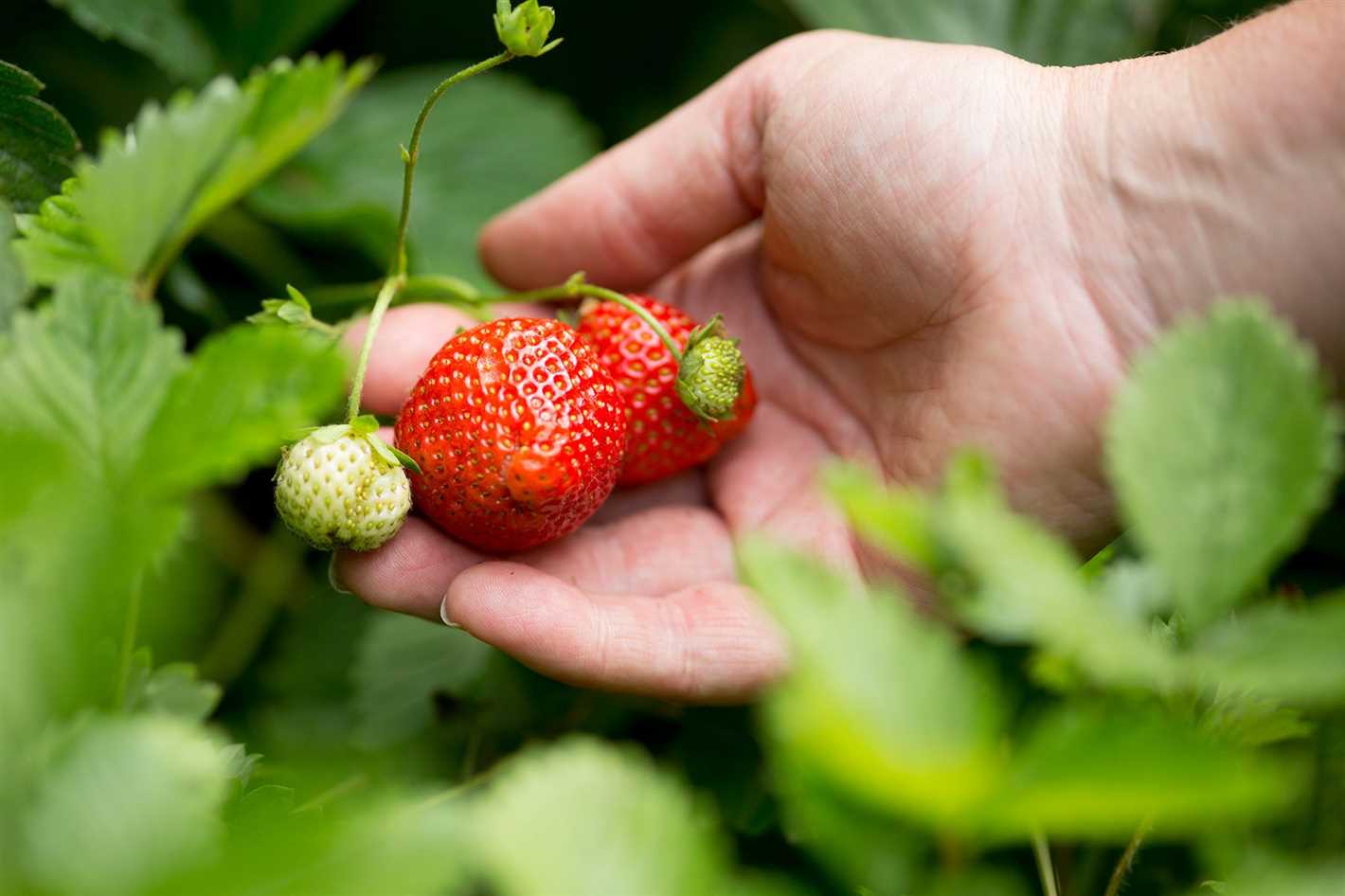
As autumn approaches, it’s time to start preparing your strawberry beds for the new season. One of the essential tasks is to clear and clean the beds to ensure healthy strawberry plants and a bountiful harvest. Here are some steps to follow:
- Remove all debris: Start by removing any dead leaves, stems, and weeds from the strawberry beds. These can harbor pests and diseases that can harm the new plants. Use a rake or a small garden fork to gently lift the debris and remove it from the beds.
- Prune the strawberry plants: Trim back any overgrown or damaged foliage from the strawberry plants. Pruning helps improve air circulation and prevents the plants from becoming too crowded. Use clean and sharp pruning shears to make clean cuts, avoiding any damage to the plants.
- Remove old straw mulch: If you used straw as mulch in the previous season, remove it from the strawberry beds. Old straw can harbor pests and diseases and should be replaced with fresh mulch in the spring.
- Inspect for pests and diseases: Take the time to carefully inspect the strawberry plants for any signs of pests or diseases. Look for chewed leaves, discoloration, or abnormal growth. If you spot any issues, take appropriate action, such as using organic pesticides or removing infected plants.
- Amend the soil: Before replanting new strawberry plants, it’s essential to amend the soil to ensure optimal growth. Add compost or well-rotted manure to improve soil fertility and drainage. Test the soil pH and adjust it if necessary to create the ideal conditions for strawberries.
- Clean and disinfect tools: After completing the above steps, don’t forget to clean and disinfect your gardening tools. This helps prevent the spread of diseases and pests. Use a mixture of water and bleach or rubbing alcohol to clean your tools thoroughly.
By clearing and cleaning your strawberry beds in autumn, you’ll create a healthy environment for your new strawberry plants, ensuring a successful growing season in the coming year.
Pruning and Removing Dead Leaves
Pruning and removing dead leaves from your strawberry plants is an essential task in autumn to ensure their health and productivity in the new season. By removing dead leaves, you help prevent the spread of diseases and pests, as well as promote better air circulation and sunlight penetration.
1. Tools needed:
- Pruning shears
- Gloves
- Bucket or gardening bag for collecting debris
2. Identify dead or diseased leaves:
Inspect each strawberry plant carefully and identify any dead or diseased leaves. Dead leaves are usually dry, discolored, and brittle, while diseased leaves may have spots, discoloration, or signs of mold or fungus growth.
3. Remove dead leaves:
Using pruning shears, carefully cut off dead leaves at the base of the plant. Make sure to dispose of them properly in a bucket or gardening bag to prevent the spread of diseases or pests.
4. Prune overcrowded plants:
If your strawberry plants have become overcrowded, remove excess runners and non-productive stems. This will allow the remaining plants to receive sufficient nutrients and sunlight for optimal growth.
5. Cut back healthy leaves:
To encourage new growth and prepare your strawberry plants for the new season, consider cutting back healthy leaves by about one-third. This will stimulate the development of new shoots and improve overall plant vigor.
6. Clean up debris:
After completing the pruning and removal of dead leaves, clean up any debris, fallen leaves, or old mulch around the plants. This helps reduce the risk of pests and diseases overwintering in the garden.
By following these essential pruning and leaf removal tasks in autumn, you’ll ensure that your strawberry plants are well-prepared for the new season, resulting in healthier plants and a bountiful harvest.
Fertilizing and Mulching the Plants
One of the essential tasks for preparing your strawberries for the new season is fertilizing and mulching the plants. This is important for providing the necessary nutrients and protecting the plants from weeds and temperature fluctuations.
Fertilizing
Before applying fertilizer to your strawberry plants, it is important to test the soil to determine its nutrient levels. This will help you choose the appropriate fertilizer and application rate.
When fertilizing strawberries in autumn, it is recommended to use a balanced fertilizer with a ratio of nitrogen (N), phosphorus (P), and potassium (K) such as 10-10-10 or 14-14-14. Apply the fertilizer according to the package instructions, ensuring even distribution around the plants.
After applying the fertilizer, lightly water the plants to help the nutrients penetrate the soil and reach the roots.
Mulching
Mulching is an important practice to protect strawberry plants during winter and improve their overall health. Apply a layer of organic material, such as straw or shredded leaves, around the plants.
The mulch layer should be about 2-4 inches thick and extend a few inches past the outermost leaves of the plants. This will help insulate the plants from extreme temperatures and prevent weeds from growing.
Additionally, mulching helps retain moisture in the soil, reducing the need for frequent watering and preventing soil erosion.
Benefits of Fertilizing and Mulching
Fertilizing and mulching your strawberry plants in autumn provide several benefits:
- Improved plant growth: The balanced nutrients provided by fertilizers promote healthy growth, leading to more vigorous plants and increased fruit production.
- Weed suppression: Mulching forms a barrier that suppresses weed growth, reducing competition for nutrients and water.
- Temperature regulation: The mulch layer acts as insulation, protecting the plants from temperature fluctuations and frost damage.
- Moisture retention: Mulching helps retain soil moisture, ensuring the plants have access to water during dry periods.
- Soil protection: Mulch prevents soil erosion and nutrient leaching, preserving the overall health of the soil.
By fertilizing and mulching your strawberry plants in autumn, you can set them up for a successful growing season in the coming year.
Protecting the Plants from Cold Weather
As autumn approaches, it is important to take steps to protect your strawberry plants from the cold weather. By providing them with proper care, you can ensure that they survive the winter and are ready to produce delicious strawberries in the new season.
1. Mulch the plants
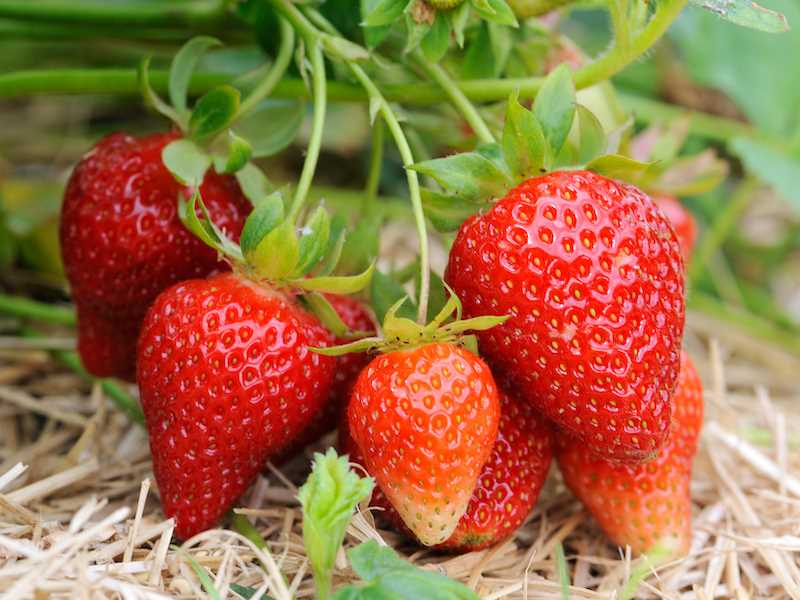
Apply a layer of organic mulch around the strawberry plants to insulate the soil and protect the roots from freezing temperatures. Straw, leaves, or wood chips are all good options for mulching.
2. Cover the plants
Use row covers or cloches to protect the strawberry plants from frost and extreme temperature fluctuations. These covers create a greenhouse effect and help retain heat, keeping the plants warm during cold nights.
3. Remove dead leaves and debris
Clear away any dead leaves or debris from around the plants. This will help prevent the buildup of fungal diseases and pests that can thrive in decaying material.
4. Water the plants sparingly
Reduce the amount of water you give to the strawberry plants as the weather gets colder. Overwatering can lead to root rot, so it is best to keep the soil slightly moist but not saturated.
5. Protect the crowns
The crown is the central part of the strawberry plant where the leaves emerge. To protect it from freezing, cover it with a layer of straw or dry leaves. This will help insulate the crown and prevent it from getting damaged by cold temperatures.
6. Monitor for pests and diseases
Even in cold weather, pests and diseases can still affect strawberry plants. Keep an eye out for signs of pests or diseases, such as wilting leaves or holes in the fruit. If necessary, take appropriate measures to control these issues and prevent further damage.
By following these essential tasks for protecting your strawberry plants from the cold weather, you can help ensure their survival and promote healthy growth in the new season. Remember to stay vigilant and adjust your care routine as needed throughout the autumn and winter months.
Watering and Irrigating the Strawberries
Proper watering is crucial for the health and productivity of your strawberry plants. Here are some important tips for watering and irrigating your strawberries:
1. Watering frequency
The frequency of watering will depend on several factors, such as the climate, soil type, and the age of your strawberry plants. As a general rule, strawberries prefer consistently moist soil, so they typically need 1-2 inches of water per week during the growing season.
2. Watering method
When watering your strawberries, it’s important to water at the base of the plants rather than overhead. This helps prevent diseases, such as gray mold, which thrive in wet foliage. Use a soaker hose or drip irrigation system to deliver water directly to the roots.
3. Watering schedule
Establish a regular watering schedule for your strawberries to ensure consistent moisture. Water in the morning to allow the plants to dry off during the day, reducing the risk of fungal diseases. Avoid watering in the evening, as this can create a damp environment that promotes disease development.
4. Soil moisture monitoring
Regularly monitor the moisture level of the soil around your strawberries. Stick your finger about an inch into the soil to check if it feels dry. If the soil feels dry, it’s time to water. Be careful not to overwater, as this can lead to root rot and other issues.
5. Mulching
Applying a layer of organic mulch around your strawberry plants helps retain soil moisture and regulate temperature. Mulching also helps suppress weed growth, which can compete with your strawberries for water and nutrients.
6. Rainwater harvesting
If possible, collect and use rainwater to irrigate your strawberries. Rainwater is free from chemicals and chlorine, making it an excellent natural source of water for your plants. Set up a rain barrel or other collection system to capture rainwater for use during dry periods.
By following these watering and irrigation tips, you can help ensure healthy and productive strawberry plants for the upcoming growing season.
Controlling Pests and Diseases
Proper pest and disease control is crucial for maintaining healthy strawberry plants during the autumn season. By taking proactive measures, you can prevent serious damage and ensure a bountiful strawberry crop in the new season.
1. Regularly Inspect Your Plants
Closely monitoring your strawberry plants for signs of pests or diseases is an essential task. Check for any unusual spots, discoloration, wilting, or pest activity on the leaves, stems, and fruits. Early detection allows for prompt intervention and minimizes the risk of an outbreak.
2. Remove Infected Leaves and Fruits
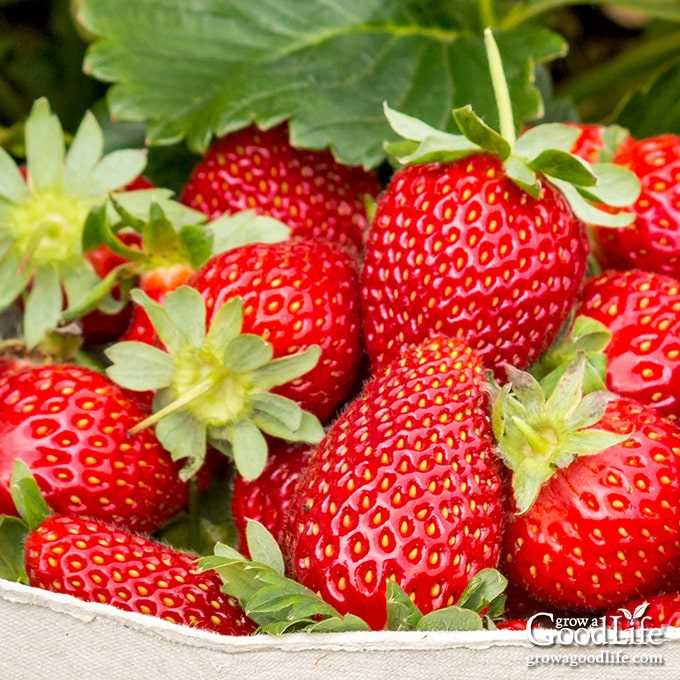
If you notice any signs of disease or pest infestation, promptly remove the affected leaves and fruits. Be sure to dispose of them properly, as they can serve as a source of infection for other plants.
3. Implement Natural Pest Control Methods
Consider using natural pest control methods, such as introducing beneficial insects like ladybugs or lacewings to your strawberry patch. These insects can help control population of harmful pests like aphids or mites. Additionally, you can create physical barriers, like row covers or netting, to protect your plants from pests.
4. Practice Proper Watering Techniques
Overwatering can create conditions that are favorable for diseases to thrive. Ensure that your strawberry plants receive adequate but not excessive water. Water the plants at the base and avoid wetting the leaves. This helps prevent the development of fungal diseases.
5. Apply Organic Pest and Disease Control Measures
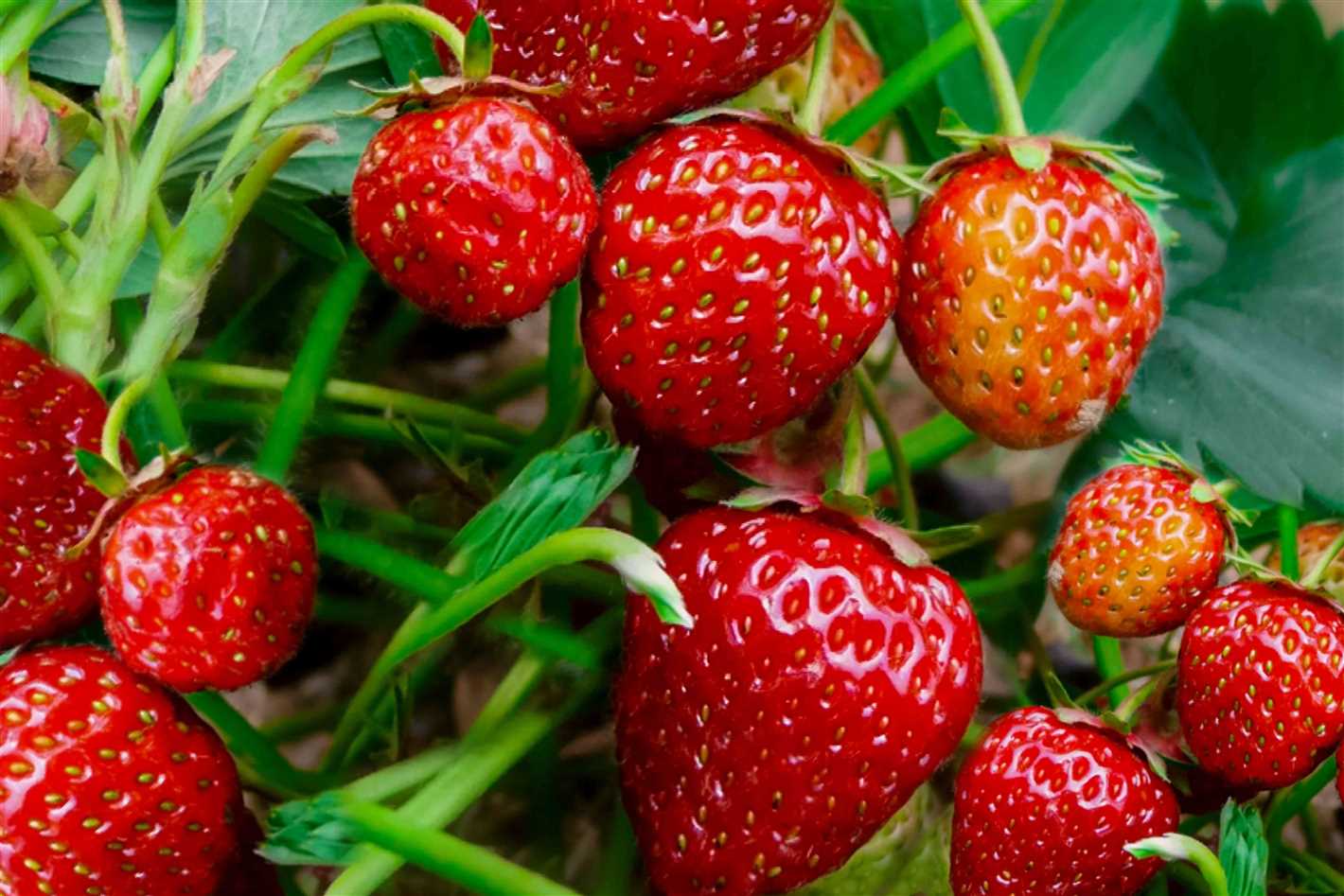
If necessary, apply organic pest and disease control measures. This might include using organic insecticides or fungicides. Be sure to follow the instructions on the product label and apply at appropriate intervals to prevent resistance development.
6. Crop Rotation and Soil Management
Implement crop rotation practices by avoiding planting strawberries in the same spot year after year. This helps break pest and disease cycles. Additionally, practice good soil management by ensuring well-draining soil and adding organic matter to improve soil health.
By incorporating these pest and disease control measures into your autumn strawberry care routine, you can effectively protect your plants and set the stage for a successful strawberry season in the coming year.
Transplanting or Replanting the Strawberries
If you are considering moving your strawberry plants to a new location or replanting them in a different area of your garden, autumn is the perfect time to do so. Transplanting or replanting your strawberries allows you to rejuvenate the soil, control diseases and pests, and optimize the growing conditions for your plants.
Follow these steps to ensure a successful transplant or replanting process:
- Choose a suitable location: Select a new site that receives at least 6-8 hours of sunlight and has well-draining soil. Avoid areas prone to waterlogging or excessive shade.
- Prepare the soil: Remove any weeds, rocks, or debris from the new planting site. Loosen the soil and amend with compost or well-rotted manure to improve its fertility and drainage.
- Prepare the plants: Trim back the foliage of the strawberry plants to about 4 inches above the crowns. Carefully lift the plants from the ground, taking care to keep their root systems intact.
- Planting: Dig a hole in the new location that is slightly larger than the root system of each plant. Place the plants in the hole, making sure the crown is level with the soil surface. Gently firm the soil around the roots and water thoroughly.
- Watering and Mulching: Provide adequate water to the transplanted or replanted strawberries immediately after planting. Apply a layer of organic mulch, such as straw or wood chips, around the plants to help conserve moisture and suppress weed growth.
- Maintenance: Monitor the transplanted or replanted strawberries closely during the autumn and winter months. Water as needed to keep the soil evenly moist but not waterlogged. Remove any weeds that may appear and protect the plants from frost or extreme cold if necessary.
By following these steps, you can ensure a smooth transition for your strawberry plants into their new location or area of your garden. Remember to provide them with proper care and attention throughout the autumn and winter months to set them up for a successful growing season in the spring.
Organizing and Planning for the New Strawberry Season
As autumn approaches, it’s important to start organizing and planning for the new strawberry season. By taking the time to prepare your strawberries before the cold weather sets in, you can ensure a successful harvest next year. Here are some essential tasks to help you get started:
1. Assess your current strawberry plants
Take a close look at your current strawberry plants and assess their health and vigor. Remove any weak or diseased plants and make note of any areas that may need additional attention or improvement.
2. Clean and prepare your strawberry beds
Clear away any weeds, debris, or old mulch from your strawberry beds. This will help prevent disease and pests from overwintering. Add fresh organic matter, such as compost or well-rotted manure, to improve soil fertility and drainage.
3. Plan your crop rotation
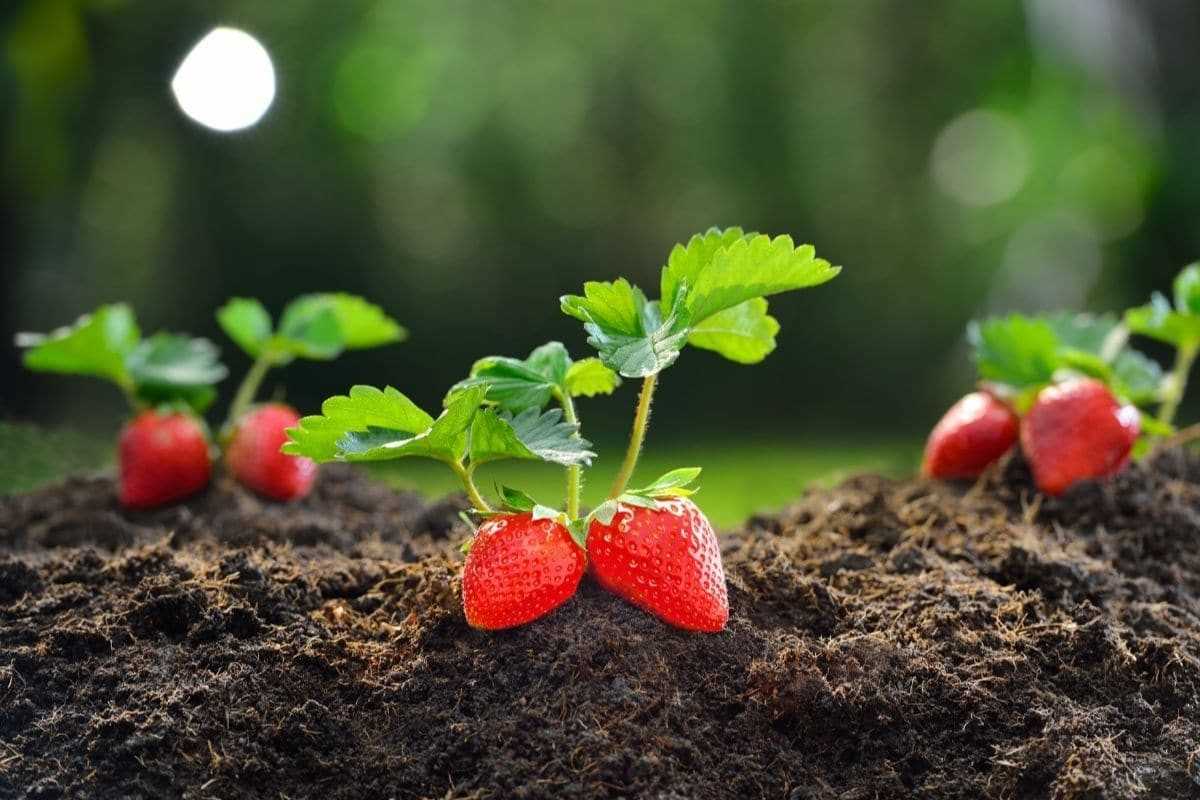
It’s important to practice crop rotation to prevent the buildup of diseases and pests in your strawberry beds. Plan ahead and choose a new location for your strawberry plants next year. Consider rotating your strawberries with crops like beans, peas, or lettuce.
4. Purchase new strawberry plants or propagate your own
If you need to replace any strawberry plants, consider purchasing new varieties or propagating your own. Choose disease-resistant varieties that are well-suited to your climate. Purchase or propagate enough plants to fill your beds with healthy, vigorous strawberry plants.
5. Prepare your planting area
Before planting your new strawberry plants, prepare the soil by removing any weeds and loosening it with a garden fork or tiller. Add compost or organic fertilizer to improve soil fertility and structure. Make sure the planting area has good drainage to prevent waterlogged soil.
6. Consider implementing a protective mulch
In areas with harsh winters, consider applying a protective mulch layer around your strawberry plants. This can help insulate the plants from freezing temperatures and reduce the risk of winter damage. Use straw, pine needles, or shredded leaves as a mulch material.
By following these essential tasks, you can organize and plan for the new strawberry season, setting yourself up for a successful harvest and healthy plants next year. Remember to monitor your plants throughout the winter and make any necessary adjustments to ensure their well-being.
Question-answer:
When is the best time to prepare strawberries for the new season?
The best time to prepare strawberries for the new season is in autumn.
What are some essential tasks for preparing strawberries for the new season?
There are six essential tasks for preparing strawberries for the new season. They include removing summer mulch, trimming dead leaves and runners, watering the plants, applying winter protection, cleaning up the beds, and replenishing the soil.
Why is it important to remove summer mulch before preparing strawberries for the new season?
Removing summer mulch is important because it helps the soil warm up and prevents disease and pest problems.
How should I trim dead leaves and runners when preparing strawberries for the new season?
When trimming dead leaves and runners, you should cut them off close to the base of the plant using clean garden shears.
What should I do to protect my strawberries during winter when preparing them for the new season?
To protect your strawberries during winter, you can use materials like straw or evergreen boughs to cover the plants and provide insulation.







